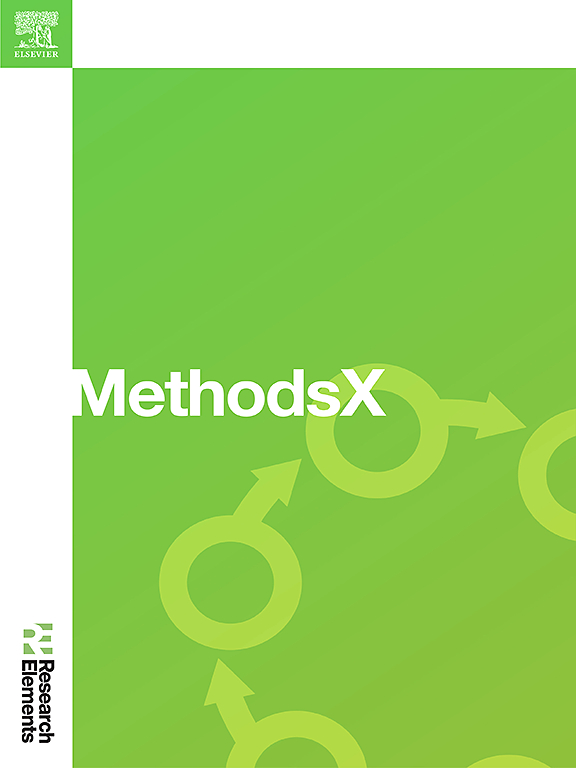Automated prediction of phosphorus concentration in soils using reflectance spectroscopy and machine learning algorithms
IF 1.6
Q2 MULTIDISCIPLINARY SCIENCES
引用次数: 0
Abstract
A method is presented for predicting total phosphorus concentration in soils from Santander de Quilichao, Colombia, using a UV-VIS V-750 Spectrophotometer and machine learning techniques. A total of 152 soil samples, prepared with varying proportions of P2O5 fertilizer and soil, were analyzed, obtaining reflectance spectra in the 200 to 900 nm range with 3501 wavelengths. Additionally, 152 laboratory results of total phosphorus concentration were used to train the prediction model. The spectra were filtered using a Savitzky-Golay filter. Key wavelengths were identified using Variable Importance in Projection - Partial Least Squares (VIP-PLS) and Random Forest (RF), reducing the spectral bands to 1085. Principal Component Analysis (PCA) further reduced data dimensionality. A feedforward artificial neural network was then trained to predict phosphorus concentration. This method is faster than traditional lab tests by leveraging advanced data analysis and machine learning, offering results in less time. While sample preparation remains consistent with standard spectroscopic analysis, the value added by the proposed method lies in its data processing and interpretation. Currently applied to a single soil type, future improvements will include more soil types and other macronutrients, enhancing nutrient management in agriculture. Accurate macronutrient measurements aid in better fertilizer uses planning.
• Filtering spectra and determining relevant wavelengths using VIP-PLS and RF.
• Dimensionality reduction with PCA.
• Training feedforward artificial neural networks.

利用反射光谱学和机器学习算法自动预测土壤中的磷浓度
本文介绍了一种利用 UV-VIS V-750 分光光度计和机器学习技术预测哥伦比亚桑坦德德基利乔土壤中总磷浓度的方法。共分析了 152 份土壤样本,这些样本是用不同比例的 P2O5 肥料和土壤制备的,获得了 200 到 900 纳米范围内 3501 个波长的反射光谱。此外,152 项实验室总磷浓度结果也用于训练预测模型。光谱使用 Savitzky-Golay 过滤器进行过滤。使用投影中的变量重要性--偏最小二乘法(VIP-PLS)和随机森林(RF)确定了关键波长,将光谱波段减少到 1085 个。主成分分析(PCA)进一步降低了数据维度。然后训练一个前馈人工神经网络来预测磷浓度。这种方法利用先进的数据分析和机器学习技术,比传统的实验室测试更快,能在更短的时间内得出结果。虽然样品制备与标准光谱分析保持一致,但拟议方法的附加值在于其数据处理和解释。目前,该方法只适用于单一土壤类型,未来的改进将包括更多土壤类型和其他宏量营养元素,从而加强农业养分管理。精确的宏量营养元素测量有助于更好地规划肥料使用。
本文章由计算机程序翻译,如有差异,请以英文原文为准。
求助全文
约1分钟内获得全文
求助全文
来源期刊

MethodsX
Health Professions-Medical Laboratory Technology
CiteScore
3.60
自引率
5.30%
发文量
314
审稿时长
7 weeks
期刊介绍:
 求助内容:
求助内容: 应助结果提醒方式:
应助结果提醒方式:


